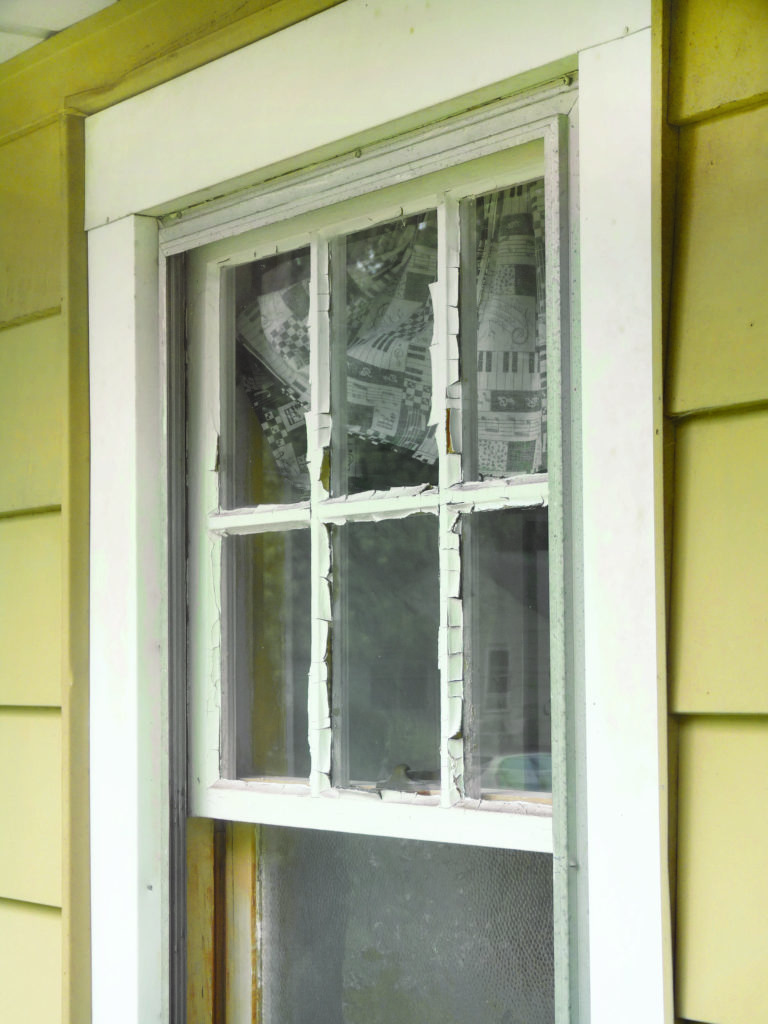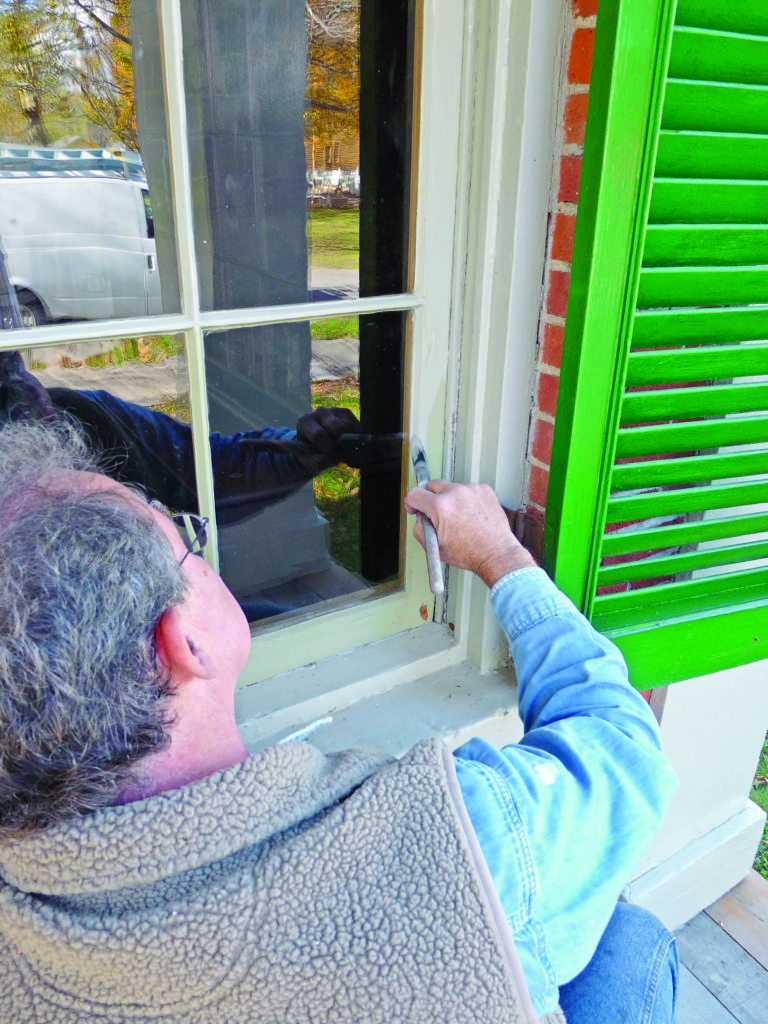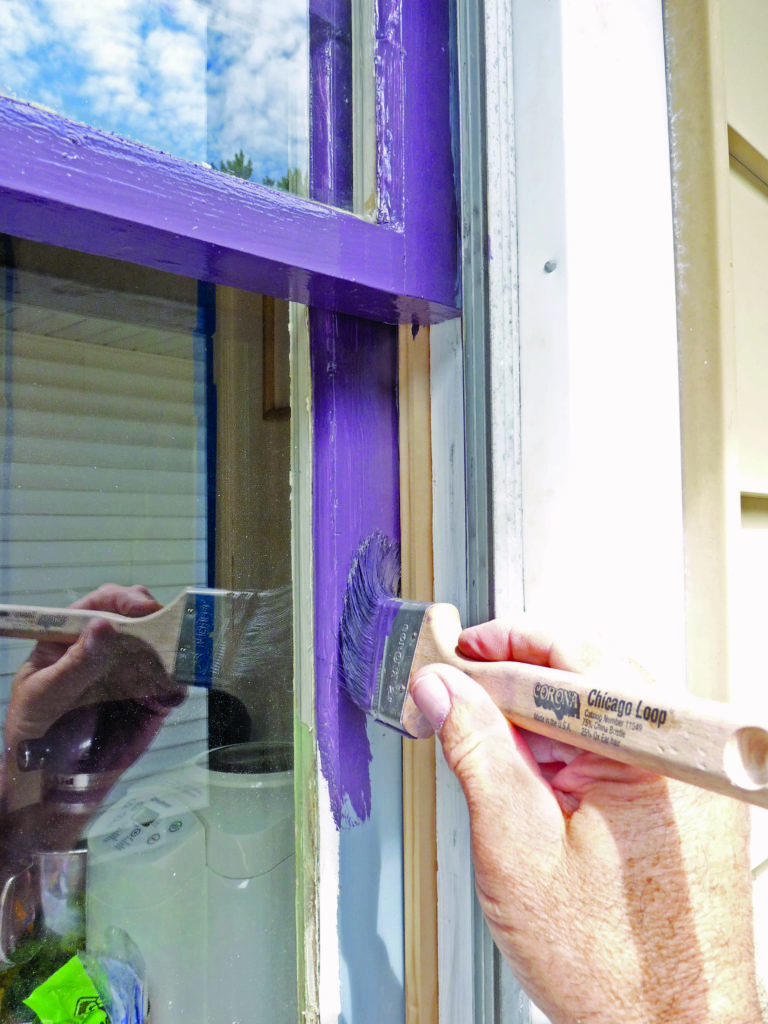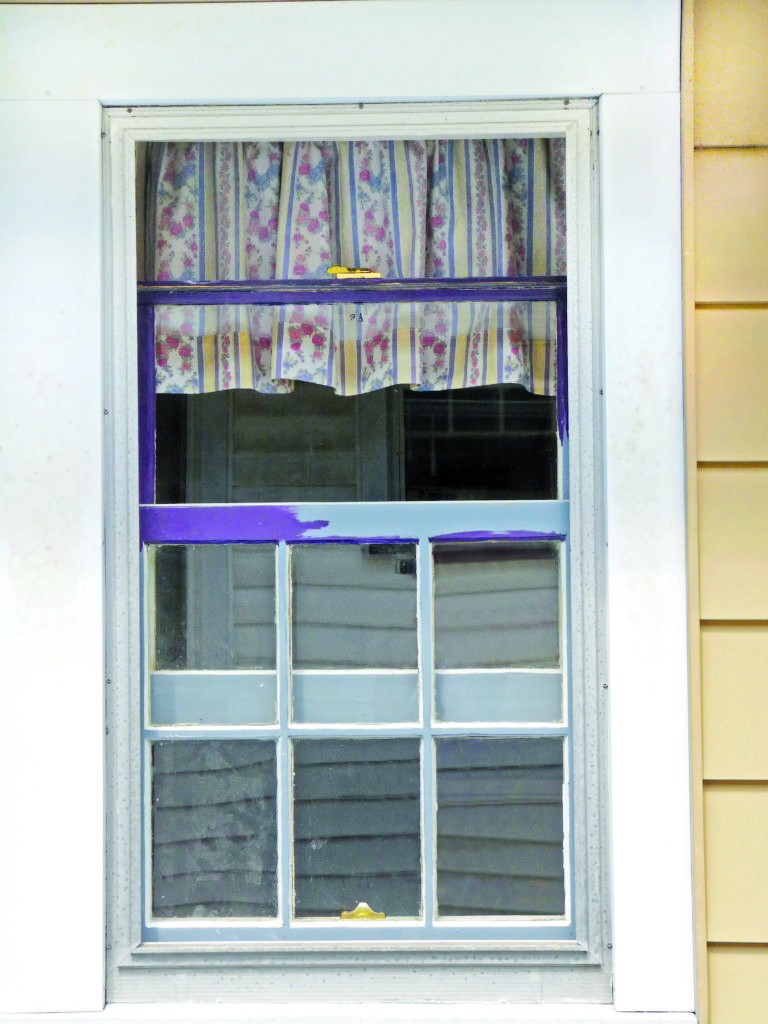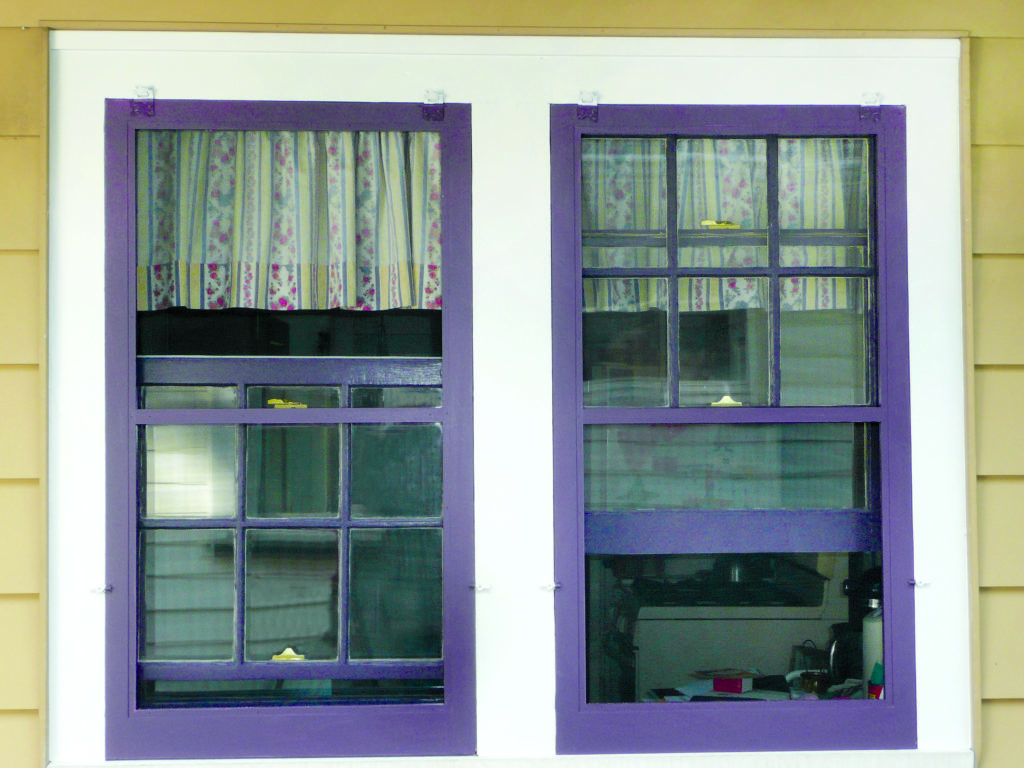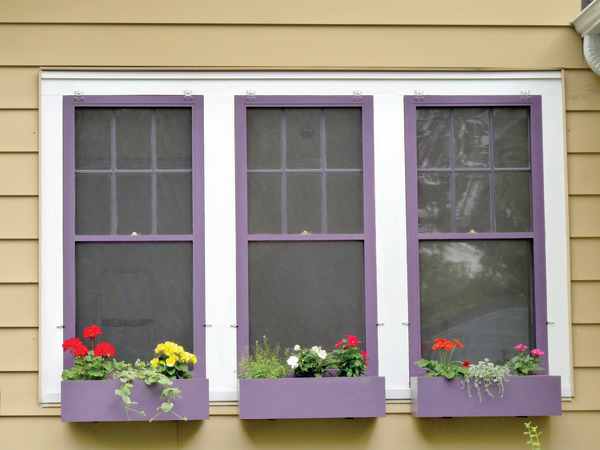
Carelessly painted windows are frequently stuck forever and one regrettable reason homeowners purchase replacements. Neither the prep nor the painting is complicated, however. Exterior prep is the familiar scrape, sand minimally, kill mildew, prime if necessary, and paint. Severely weathered wood should be preconditioned with a 50/50 mixture of turpentine and boiled linseed oil or a product like Penetrol.
If the glazing (window glass) needs to be reputtied, do this well in advance of painting —three days to several weeks depending on the weather. Slow-drying oil-based exterior primer has a long history for repainting and spot-priming deteriorated surfaces on older homes. But you may not be able to purchase oil-based paints in your area. Unless a painted surface is chalking or peeling, existing paint in good condition may not need primer. Two thin coats are better than one heavy coat despite assurances of “one coat coverage.”
Step 1
Prep: Windows protected by storm sash typically require painting every 20 years. Without exterior storms, maintenance depends on climate, exposure, and condition; five to 10 years is average. Spot glazing is the removal of loose, deteriorated putty without removing firmly adhered material at risk of breaking glass. Condition the wood if necessary, and prime bare wood and chalking or weathered surfaces.
Step 2
To paint a window from outside, pull the upper sash partially down and push the lower sash partially up to gain access to the meeting rail. Neatly paint the meeting rail and about three inches of the stiles and muntins below it, taking care to keep paint off the top of the meeting rail (which gets the interior finish). Push the lower sash back down about two inches above of the sill and push the upper sash up about one inch below the head.
Step 3
Brushes labeled “stiff” or “extra stiff” are best for painting windows because these allow you to cut a crisp, sharp edge. Paint the sash and muntins sequentially. For muntins, begin at the top horizontal edges, move down to the verticals, and then paint the lower horizontals. By moving in this sequence you can scrape off any loose paint or putty you may have missed without it falling into your fresh paint. Paint the stiles and rails by “feathering” the paint into abutting stops.
Step 4
Painters paint windows quickly and neatly, usually in two swift strokes across each muntin. With the right tools and patience, you’ll learn to do this. After both sashes are painted, allow them to dry thoroughly before closing them. When dry, open and close each sash from the inside several times to make sure they do not stick in the closed position.
Tools & Materials
Simple, traditional painter’s tools are needed, all readily available at the paint or hardware store.
- 2″ angled sash brush, stiff or extra stiff
- Glazing compound (window putty)
- Putty knife, flexible or stiff—kept very clean
- Utility knife & blades
- Mask or respirator (for scraping, sanding)
- Oil-based primer compatible with finish coat
- Exterior paint with sheen or gloss



